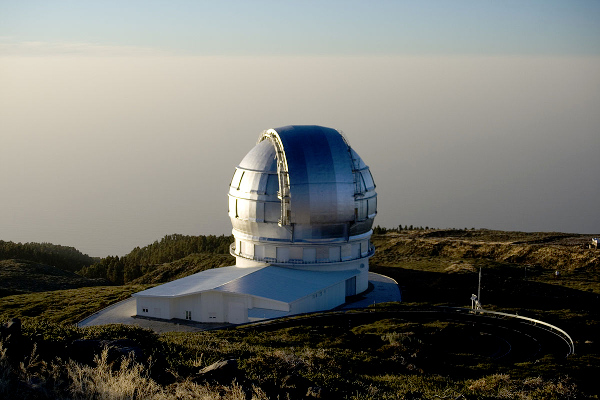Starting this year, India will start manufacturing some of the most complex mirror pieces and key subsystems, which will be assembled onto the under-construction Thirty Metre Telescope (TMT), the world’s largest ground-based telescope.
India is one of the member countries, along with institutions in the USA, Canada, Japan and China, that are working on the international mega science project, planned to be built on Mauna Kea in the Hawaiian islands.
Recently, the Indian scientific community awarded Larsen & Toubro (L&T) the project to build Segment Support Assembly (SSA). These are complex optomechanical sub-assemblies on which each hexagonal mirror of the 30-metre primary mirror, the heart of the telescope, is mounted.
The SSAs are responsible for ensuring that the each of the total 492 mirror segments remain aligned and phased to very high accuracy, at the time of taking observations.
The Department of Science and Technology (DST) and the Department of Atomic Energy (DAE) are jointly giving Rs 1,300 crore for the project over a period of 10 years of construction. Of the total sanctioned budget, India plans to spend about 70 per cent on developing various key hardware and software systems for the project.
Importantly, a first-of-its-kind large optics facility, called IndiaTMT Optics Fabricating Facility (ITOFF), is coming up on the campus of the Indian Institute of Astrophysics (IIA) at Hosakote near Bengaluru.
“On behalf of India TMT, IIA, Bengaluru inked a contract with L&T on December 31, 2018, for manufacturing 100 SSAs. This contract has been placed with a total value of approximately Rs 60 crore,” India-TMT Programme Director Eswar Reddy told The Indian Express.
EXPLAINED
Legal challenges for the project
The groundbreaking ceremony for the project was held in October 2014. But the TMT consortium faced legal challenges till late last year, mainly due to opposition from some groups of native Hawaiians who are against setting up of the observatory on Mauna Kea. In 2018, the Hawaii Supreme Court gave two verdicts in favour of TMT, thereby paving way for on-site construction. The TMT board is evaluating its options in the wake of these judgments before taking a decision on further course of action.
During the course of this year, L&T will manufacture 10 SSAs. So far, about 10 per cent, or a little over 100 crores, have been spent in setting up various facilities and the co-ordination centre for India-TMT, on organising science outreach programmes and workshops, for developing and testing prototypes of the subsystems of the telescope to be built in India.
Prior to initiating manufacturing of the SSAs, the India-TMT team had developed six prototypes by engaging with a select Indian companies.
India has a significant role among other member nations, with key instrumentation components for the TMT being manufactured in the country.
For instance, the 80 mirrors contributed by India are designed to be placed along the circumference of the primary mirror and are among the toughest ones to manufacture. Each of the 492 mirrors, belonging to 82 different types, will carry 12 pairs of edge sensors. These sensors detect even minute faults in alignments among the segments and provide feedback to a set of three actuators behind each mirror segment. Together, the sensors, actuators and the SSAs that are controlled through a complex alignment and phasing software will ensure that the mirror segments stay phased.
“All sensors, actuators and SSAs for the whole telescope are being developed and manufactured in India, which will be put together in building the heart of TMT. All of these demand engineering precision. Since it is for the first time that India is involved in such a technically demanding astronomy project, it is also an opportunity to put to test the abilities of Indian scientists and industries, alike. The skills developed for the project can have applications in a wide range of areas.” said A N Ramaprakash, the Associate Programme Director of India-TMT. On the manufacturing plans in the months ahead, Reddy said: “L&T shall be responsible, right from the procurement of raw materials to manufacturing, inspection, assembly of the SSA components, as per the prescribed requirements. Initially, there will a Production Qualification Phase (PQP) and tests would be performed on 10 manufactured SSAs. Depending on the results and project requirements and fund flow, a decision on production phase will be taken thereafter.”
Source: IE
Image Courtesy:Wikipedia
You may also like
-
New Heat-Based Approach To Cancer Treatment Can Reduce Chemotherapy Doses
-
Scientists Take A Major Step Towards Unification Of Classical & Quantum Gravity
-
India Graphene Engineering and Innovation Centre (IGEIC) Under the Vision of Viksit Bharat@2047 Launched
-
New High-Performance Gas Sensor can Monitor Low Level Nitrogen Oxides Pollution
-
Antidepressant Drug can be Repurposed for Treating Breast Cancer
